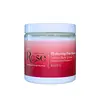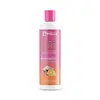What's inside
What's inside
 Key Ingredients
Key Ingredients

 Benefits
Benefits

 Concerns
Concerns

 Ingredients Side-by-side
Ingredients Side-by-side

Water
Skin ConditioningGlycerin
HumectantPropanediol
SolventButyrospermum Parkii Butter
Skin ConditioningBeeswax
Emulsion StabilisingIsopropyl Myristate
EmollientBehenyl Alcohol
EmollientVitis Vinifera Seed Oil
EmollientMangifera Indica Seed Butter
Skin ConditioningPolysorbate 20
EmulsifyingCetearyl Alcohol
EmollientSimmondsia Chinensis Seed Oil
EmollientRicinus Communis Seed Oil
MaskingDicetyl Phosphate
EmulsifyingCeteth-10 Phosphate
CleansingTocopheryl Acetate
AntioxidantAloe Barbadensis Leaf Extract
EmollientCroton Zambesicus Powder
Bacopa Monnieri Extract
Skin ConditioningPhenoxyethanol
PreservativeEthylhexylglycerin
Skin ConditioningSodium Carbomer
Emulsion StabilisingXanthan Gum
EmulsifyingSalvia Officinalis Oil
MaskingPelargonium Graveolens Leaf Oil
Citrus Aurantium Bergamia Peel Oil
Water, Glycerin, Propanediol, Butyrospermum Parkii Butter, Beeswax, Isopropyl Myristate, Behenyl Alcohol, Vitis Vinifera Seed Oil, Mangifera Indica Seed Butter, Polysorbate 20, Cetearyl Alcohol, Simmondsia Chinensis Seed Oil, Ricinus Communis Seed Oil, Dicetyl Phosphate, Ceteth-10 Phosphate, Tocopheryl Acetate, Aloe Barbadensis Leaf Extract, Croton Zambesicus Powder, Bacopa Monnieri Extract, Phenoxyethanol, Ethylhexylglycerin, Sodium Carbomer, Xanthan Gum, Salvia Officinalis Oil, Pelargonium Graveolens Leaf Oil, Citrus Aurantium Bergamia Peel Oil
Water
Skin ConditioningCocos Nucifera Oil
MaskingSorbitol
HumectantIsopropyl Myristate
EmollientCetearyl Alcohol
EmollientSodium Stearyl Sulfate
CleansingCyclopentasiloxane
EmollientGlyceryl Stearate Se
EmulsifyingOlea Europaea Fruit Oil
MaskingStearic Acid
CleansingCarthamus Tinctorius Seed Oil
MaskingRicinus Communis Seed Oil
MaskingOryza Sativa Bran Water
MaskingBrassica Campestris Seed Oil
Skin ConditioningCitrus Junos Peel Extract
Skin ConditioningPolyglyceryl-3 Diisostearate
EmulsifyingPhenoxyethanol
PreservativeBenzoic Acid
MaskingEthylhexylglycerin
Skin ConditioningGlycereth-2 Cocoate
EmulsifyingDiheptyl Succinate
EmollientCapryloyl Glycerin/Sebacic Acid Copolymer
Skin ConditioningXanthan Gum
EmulsifyingAminomethyl Propanol
BufferingBHT
AntioxidantDisodium EDTA
Hydrolyzed Milk Protein
Skin ConditioningParfum
MaskingWater, Cocos Nucifera Oil, Sorbitol, Isopropyl Myristate, Cetearyl Alcohol, Sodium Stearyl Sulfate, Cyclopentasiloxane, Glyceryl Stearate Se, Olea Europaea Fruit Oil, Stearic Acid, Carthamus Tinctorius Seed Oil, Ricinus Communis Seed Oil, Oryza Sativa Bran Water, Brassica Campestris Seed Oil, Citrus Junos Peel Extract, Polyglyceryl-3 Diisostearate, Phenoxyethanol, Benzoic Acid, Ethylhexylglycerin, Glycereth-2 Cocoate, Diheptyl Succinate, Capryloyl Glycerin/Sebacic Acid Copolymer, Xanthan Gum, Aminomethyl Propanol, BHT, Disodium EDTA, Hydrolyzed Milk Protein, Parfum
Ingredients Explained
These ingredients are found in both products.
Ingredients higher up in an ingredient list are typically present in a larger amount.
Cetearyl alcohol is a mixture of two fatty alcohols: cetyl alcohol and stearyl alcohol. It is mainly used as an emulsifier. Emulsifiers help prevent the separation of oils and products. Due to its composition, it can also be used to thicken a product or help create foam.
Cetearyl alcohol is an emollient. Emollients help soothe and hydrate the skin by trapping moisture.
Studies show Cetearyl alcohol is non-toxic and non-irritating. The FDA allows products labeled "alcohol-free" to have fatty alcohols.
This ingredient is usually derived from plant oils such as palm, vegetable, or coconut oils. There is debate on whether this ingredient will cause acne.
Due to the fatty acid base, this ingredient may not be Malassezia folliculitis safe.
Learn more about Cetearyl AlcoholEthylhexylglycerin (we can't pronounce this either) is commonly used as a preservative and skin softener. It is derived from glyceryl.
You might see Ethylhexylglycerin often paired with other preservatives such as phenoxyethanol. Ethylhexylglycerin has been found to increase the effectiveness of these other preservatives.
Isopropyl Myristate is an emollient, thickening agent, and texture enhancer. It is created from isopropyl alcohol and myristic acid.
It is used to help other ingredients be better absorbed. It is also an emollient and may help soften and hydrate the skin.
The comedogenic rating of this ingredient depends on the concentration. Lower amounts results in a lower rating.
Isopropyl Myristate may not be fungal acne safe. It can potentially worsen acne prone skin.
Learn more about Isopropyl MyristatePhenoxyethanol is a preservative that has germicide, antimicrobial, and aromatic properties. Studies show that phenoxyethanol can prevent microbial growth. By itself, it has a scent that is similar to that of a rose.
It's often used in formulations along with Caprylyl Glycol to preserve the shelf life of products.
Ricinus Communis Seed Oil is the INCI name for castor oil.
Castor Oil helps moisturize the skin. It is rich in a fatty acid called ricinoleic acid. This fatty acid helps prevent moisture loss on the skin. This helps keep your skin soft and hydrated. Ricinoleic acid also has anti-inflammatory and pain reducing properties.
Besides hydrating the skin, castor oil is also used to hydrate hair. By keeping the hair shaft moisturized, breakage is decreased. More studies are needed to show castor oil's effective on stimulating hair growth.
Castor oil is created by cold-pressing castor seeds and then purifying the oil with heat. It was used in Ancient Egypt as fuel in lamps and to help treat eye irritation.
The term 'fragrance' is not regulated in many countries. In many cases, it is up to the brand to define this term. For instance, many brands choose to label themselves as "fragrance-free" because they are not using synthetic fragrances. However, their products may still contain ingredients such as essential oils that are considered a fragrance.
Learn more about Ricinus Communis Seed OilWater. It's the most common cosmetic ingredient of all. You'll usually see it at the top of ingredient lists, meaning that it makes up the largest part of the product.
So why is it so popular? Water most often acts as a solvent - this means that it helps dissolve other ingredients into the formulation.
You'll also recognize water as that liquid we all need to stay alive. If you see this, drink a glass of water. Stay hydrated!
Learn more about WaterXanthan gum is used as a stabilizer and thickener within cosmetic products. It helps give products a sticky, thick feeling - preventing them from being too runny.
On the technical side of things, xanthan gum is a polysaccharide - a combination consisting of multiple sugar molecules bonded together.
Xanthan gum is a pretty common and great ingredient. It is a natural, non-toxic, non-irritating ingredient that is also commonly used in food products.
Learn more about Xanthan Gum